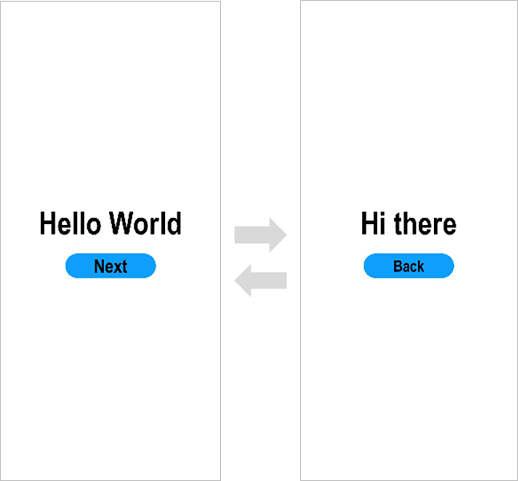harmony 鸿蒙Before You Start
Before You Start
This document is intended for novices at developing OpenHarmony applications. It will introduce you to the OpenHarmony project directory structure and application development process, by walking you through a stripped-down, real-world example – building two pages and implementing redirection between them. The following figure shows how the pages look on the DevEco Studio Previewer.

Before you begin, there are two basic concepts that will help you better understand OpenHarmony: UI framework and application model.
Basic Concepts
UI Framework
OpenHarmony provides a UI development framework, known as ArkUI. ArkUI provides a full range of capabilities you may need for application UI development, ranging from components to layout calculation, animation, UI interaction, and drawing capabilities.
ArkUI comes with two development paradigms: ArkTS-based declarative development paradigm (declarative development paradigm for short) and JavaScript-compatible web-like development paradigm (web-like development paradigm for short). You can choose whichever development paradigm that aligns with your practice.
| Development Paradigm | Programming Language | UI Update Mode | Applicable To | Intended Audience |
|---|---|---|---|---|
| Declarative development paradigm | ArkTS | Data-driven | Applications involving technological sophistication and teamwork | Mobile application and system application developers |
| Web-like development paradigm | JavaScript | Data-driven | Applications and service widgets with simple UIs | Frontend web developers |
For more details, see UI Development.
Application Model
The application model is the abstraction of capabilities required by an application. It provides components and mechanisms required for running the application. You can develop applications based on a unified model, making application development simpler and more efficient. For details, see Elements of the Application Model.
Along its evolution, OpenHarmony has provided two application models:
Stage model: This model is supported since API version 9. It is recommended. In this model, classes such as AbilityStage and WindowStage are provided as the stage of application components and windows. That’s why it is named stage model. For details about development based on the stage model, see Stage Model Development Overview. The examples in this document are all based on the stage model.
Feature Ability (FA) model: This model is supported since API version 7. It is no longer recommended. For details about development based on the FA model, see FA Model Development Overview.
For details about the differences between the FA model and stage model, see Application Models.
To help you better understand the preceding basic concepts and application development process, Getting Started walks you through an example of building the first ArkTS application with two pages in the stage model.
Tool Preparation
Download the latest version of DevEco Studio.
Install DevEco Studio and configure the development environment.
When you are done, you can set out to build your first ArkTS application in the stage model.
你可能感兴趣的鸿蒙文章
harmony 鸿蒙Creating an Application Clone
harmony 鸿蒙app.json5 Configuration File
harmony 鸿蒙Structure of the app Tag
harmony 鸿蒙Overview of Application Configuration Files in FA Model
harmony 鸿蒙Overview of Application Configuration Files in Stage Model
harmony 鸿蒙Application Installation, Uninstall, and Update
harmony 鸿蒙Application Package Overview
- 所属分类: 后端技术
- 本文标签: